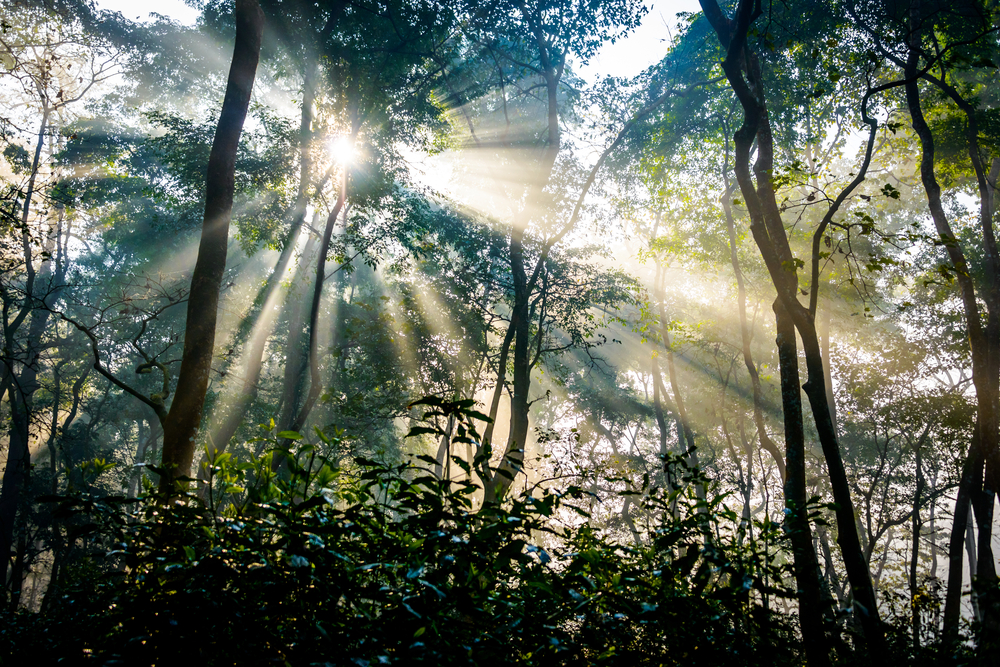by GD Maxine Margo Rubin
Thinking, I’m always thinking, I can’t seem to turn my brain off. After all, if your brain is always cluttered, and all you do is mutter, than you need to make a change. Life is crazy, and we are on a perpetual merry-go-round with infrequent stops on the nature trail. We are in search of that Rocky Mountain High, which is more than just a song by John Denver, it’s a mantra.
A dose of nature, and eco-therapy can help you get to a calmer place. Mathew White of the European Centre for Environment & Human Health at the University of Exeter led a recent study of 20,000 people, which found that people who spent two hours a week in green spaces — local parks or other natural environments, either all at once or spaced over several visits — were substantially more likely to report good health and psychological well-being than those who don’t.
120 minutes in nature makes you feel better, and when you are more connected to Mother Earth, you have less stress, more glee!
Eco-psychology or green therapy is used to connect the human psyche to the natural Earth. The well being of humans is at risk these days, with the pressures of life and the feelings of dread about climate change, the onset of extreme weather, pandemic viruses and extinction of species are causing depression and anxiety, and other maladies.
Before you read on…
my segment about this on the latest 50 Shades of GDs show starts @ 9:00
What is eco-therapy?
Eco-therapy, also known as nature therapy, is the applied practice of the emergent field of eco-psychology, which was developed by Theodore Roszak. Eco-therapy, stems from the belief that people are part of the web of life and that our psyches are not isolated or separate from our environment. Eco-therapy can help guide one through the feelings of despair from a damaged planet. Now psychologists are using nature to to heal the mind.
Susan Clayton at the College of Wooster said, “the ability to process information and make decisions without being disabled by extreme emotional responses is threatened by climate change”.
Psychologist Maria Nazarian said that “when we feel connected to the world around us, we experience more joy and belonging, less depression and less anxiety, all of which increase our thinking, creativity, well-being and generosity.”
What can green therapy do?
Green therapy uses nature to relax the mind, which in turn helps lower blood pressure, enhance immune system function, increase self-esteem, reduce anxiety, and improves mood. Psychiatric unit researchers found that being in nature reduced feelings of isolation, promoted calm, and lifted mood among patients.
Forms of eco-therapy

Green Space Therapy
Green space therapy is being used to address mood modification and stress reduction. Green space is important for physical and mental well-being. Interaction and engagement with green space has been linked with increased length of life and decreased risk of mental illness across a number of countries (Takano et al., 2002).
Many cities and towns are taking note of the need for more open space, and as a result, they are adding or enhancing parks, and schools and other institutions are being designed with large windows and access to trees and green space — or blue space, as in aquatic environments. Businesses are increasingly aware of the desire among employees to have access to green spaces. Florence Williams, author of The Nature Fix said “It’s needed to attract a skilled work force, and young people are demanding high-quality outdoor experiences.”
Forest Bathing
Forest Bathing, or shinrin-yoku, is a phrase coined in Japan which means walking in the woods. Shinrin in Japanese means “forest,” and yoku means “bath.” So shinrin-yoku means bathing in the forest atmosphere, or taking in the forest through our senses. Japanese researchers found that aerosols from the forests, inhaled during a walk, are behind elevated levels of natural killer or NK cells in the immune system, which fight tumors and infections.
Nature meditation
This meditation takes place in a natural setting, such as a park, and is sometimes done as group therapy. Members of the group may identify something in nature which attracts them and then spend a few minutes contemplating how this aspect of nature relates to them and what they can learn from it. An elderly person struggling with feelings of worthlessness might develop greater self-respect after meditating on how the older trees in a forest provide shelter for birds and shade for younger plants.
Horticultural therapy
The use of plants and garden-related activities can promote well-being. Activities may include digging soil, planting seedlings, weeding garden beds, and trimming leaves. This type of intervention may be recommended in cases of stress, burnout, and substance abuse, as well as in cases of social isolation among the elderly,as well as veterans suffering from PTSD.
Animal-assisted therapy
In animal-assisted therapy, one or more animals is introduced into the healing process. Some studies have demonstrated that petting or playing with a dog, for example, reduces aggression and agitation in some populations.
Other therapies include: Wilderness Therapy, Conservation Therapy, Physical Exercise and Forest Schools.
So, make interacting with nature part of your daily routine. Send your kids outside to play or take them to a park, a playground, an outdoor space to bird watch or climb a tree. Interaction with nature affects not only our well-being but our health throughout life. Connecting to nature makes children and adults more active, as they are connected to people and society, and become better engaged with natural places. So pick a place outside to while away the hours or confer with the flowers, and make space in your brain to be one with nature. The scarecrow had the right idea indeed.